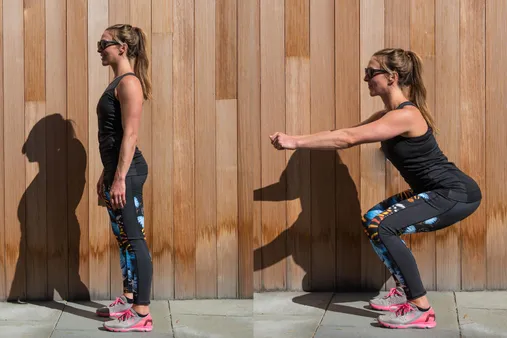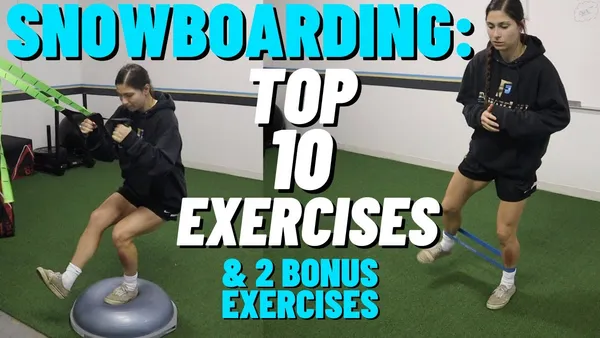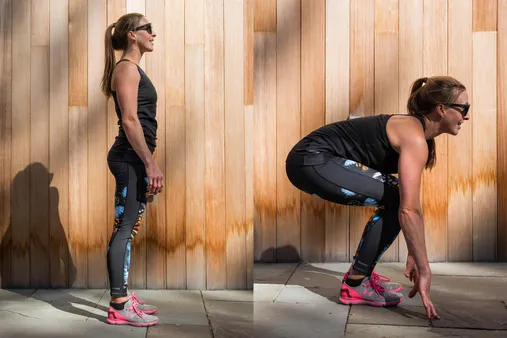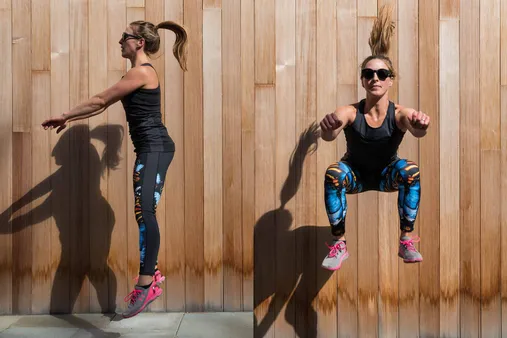Table of Contents
Thrill-seekers seeking to conquer snowy slopes, welcome to Kizworld's definitive guide on How to train like a snowboarder. With our insights, you'll discover the secrets of mastering this exhilarating sport, from essential gear and core principles to advanced techniques and safety considerations. Whether you're a beginner craving your first taste of powder or an experienced rider striving for perfection, this comprehensive resource will guide you towards becoming a confident and skilled snowboarder. Unleash your inner adventurer and prepare for an unforgettable journey down the mountains.
How to Train Like a Snowboarder: Unleash Your Inner Shredder
I. Developing Leg Strength
Developing Leg Strength
Building strong legs is crucial for snowboarding, as it helps you maintain balance, control, and power on the board. Here are some exercises to strengthen your legs:
- Squats: This classic exercise targets your quads, hamstrings, and glutes. Perform 3 sets of 10-12 repetitions.
- Lunges: Lunges work your quads, hamstrings, and glutes. Do 3 sets of 10-12 repetitions on each leg.
- Calf raises: Calf raises strengthen your calf muscles, which are important for balance and stability. Perform 3 sets of 15-20 repetitions.
Incorporate these exercises into your routine 2-3 times per week to improve your leg strength and enhance your snowboarding performance. Check out our guide on Snowboarding Exercises and Workouts for more tips.
II. Improving Core Strength
A strong core is essential for snowboarding, as it helps you maintain balance, control, and stability on the board. Here are some exercises to strengthen your core:
- Planks: Planks target your entire core, including your abs, obliques, and lower back. Hold the plank position for 30-60 seconds, and repeat for 3 sets.
- Crunches: Crunches work your abs and obliques. Perform 3 sets of 15-20 repetitions.
- Side planks: Side planks target your obliques and help improve your balance. Hold the side plank position for 30-60 seconds on each side, and repeat for 3 sets.
Incorporate these exercises into your routine 2-3 times per week to strengthen your core and enhance your snowboarding performance. Visit our guide on Snowboarding Exercises and Workouts for more core-strengthening exercises.
III. Improving Core Stability
Improving Core Stability
Strengthening Your Core for Snowboarding
Enhancing core strength is crucial for snowboarding. A solid core provides stability, balance, and control while maneuvering on the slopes. Specific core exercises can help you build a strong foundation for snowboarding.
- Plank: Hold a plank position for 30 seconds to a minute, gradually increasing the duration over time.
- Side Plank: Perform side planks on both sides, holding each position for 30 seconds to a minute.
- Superman: Lie on your stomach, arms and legs extended, and lift your arms, legs, and head off the ground.
- Bird Dog: Start on your hands and knees, then extend your right arm and left leg simultaneously. Hold for a few seconds, then switch sides.
- Russian Twist: Sit on the floor with your knees bent and feet elevated. Hold a medicine ball or weight in your hands and twist your torso from side to side.
By incorporating these exercises into your training routine, you can develop a strong core that will improve your snowboarding skills and overall performance.
Core Exercises for Enhanced Snowboarding Performance
Regularly performing core exercises can significantly enhance your snowboarding experience. Here are some exercises to target and strengthen your core muscles:
- Crunches: Perform traditional crunches by lying on your back, knees bent, and lifting your torso off the ground.
- Bicycle Crunches: Lie on your back, hands behind your head, and bring your right elbow to your left knee while extending your right leg.
- Leg Raises: Lie on your back, hands at your sides, and lift both legs off the ground, keeping them straight.
- Pelvic Tilts: Lie on your back, knees bent, and tilt your pelvis forward and backward.
- Bridges: Lie on your back, knees bent, and lift your hips off the ground, forming a straight line from your shoulders to your knees.
By consistently engaging in these core exercises, you can strengthen your core muscles and improve your overall balance and control on the slopes, taking your snowboarding performance to the next level.
IV. Enhancing Balance and Coordination
Enhancing Balance and Coordination
Mastering the art of snowboarding requires exceptional balance and coordination. These fundamental skills allow you to maintain control and stability on the board, enabling effortless gliding and maneuverability down snowy slopes. Whether you're a beginner taking your first tentative steps on the snow or an experienced rider seeking to refine your technique, enhancing your balance and coordination is paramount for an enjoyable and rewarding snowboarding experience. Here are some effective exercises and drills to improve these crucial skills:
Exercise | Benefits |
|---|---|
Single-Leg Stance | Strengthens ankles and improves balance on one foot. |
Heel-Toe Walks | Enhances coordination and proprioception. |
Balance Board Training | Challenges balance and core stability. |
By regularly incorporating these exercises into your training routine, you can significantly improve your balance and coordination, setting the stage for confident and graceful snowboarding.
V. Developing Core Strength
A strong core is the foundation for effective snowboarding. Core muscles provide stability, power, and control, enabling you to maintain proper form and execute maneuvers with precision. Here are some exercises to strengthen your core and enhance your snowboarding performance:
- Plank
- Side Plank
- Mountain Climbers
- Russian Twists
- TRX Exercises
Discover more tips on how to train like a pro snowboarder and elevate your skills to new heights.
VI. Boosting Endurance
Boosting Endurance
Sustained energy is key to snowboarding progress. Lengthen your runs and master new tricks by incorporating endurance-building activities into your training regimen. Here are four exercises to enhance your stamina and help you shred longer:
Interval Training
- Alternate between high-intensity sprints and rest or low-intensity periods.
- Work-to-rest ratio can vary based on fitness level.
- Running or cycling are great options.
Hill Training
- Find a hill with a moderate incline.
- Sprint up the hill, then walk or jog back down.
- Repeat for multiple sets.
Jump Rope
- Provides a full-body workout while improving coordination and agility.
- Start with short sessions and gradually increase duration.
- Incorporate different jump variations for added challenge.
Yoga or Pilates
- Focus on core strength and flexibility.
- Improves balance and姿勢, reducing the risk of injury.
- Can be done at home or in a studio.
Monday | Interval Training |
Tuesday | Yoga or Pilates |
Wednesday | Active Rest |
Thursday | Hill Training |
Friday | Jump Rope |
Saturday | Active Rest |
Sunday | Long, Slow Distance Training |
Maintaining a healthy diet and staying hydrated are also crucial for endurance. Remember to listen to your body and adjust the intensity and duration of your workouts as needed. With dedication and consistency, you'll be gliding down the slopes with newfound stamina and energy.
VII. Fine-tuning Technique
Mastering snowboarding technique involves continual refinement of movements and body mechanics. Here are key aspects to focus on for enhanced performance:
Stance and Balance
- Proper stance and balance are the foundation of good snowboarding.
- Start with a shoulder-width stance, knees slightly bent.
- Practice balancing on one leg to strengthen your core.
Edge Control
- Mastering edge control allows for precise turns and stops.
- Apply pressure on the toe edge to turn left and the heel edge to turn right.
- Practice carving turns on gentle slopes to develop muscle memory.
Body Positioning
- Keep your body weight centered over the board.
- Bend your knees and keep your back straight.
- Use your arms for balance and to initiate turns.
Smooth Transitions
- Focus on smooth transitions between turns.
- Avoid abrupt movements that can disrupt your balance.
- Practice linking turns together to create a fluid riding style.
Mistake | Correction |
Leaning back | Keep your weight centered over the board. |
Stiff knees | Bend your knees to absorb bumps and maintain control. |
Looking down | Keep your head up and focus on where you want to go. |
Jerky movements | Move smoothly and fluidly to maintain balance and control. |
Not using your arms | Use your arms for balance and to initiate turns. |
Remember, technique improvement takes time and practice. Be patient and focus on making gradual progress. With dedication and consistency, you'll elevate your snowboarding skills to new heights.
VIII. Conclusion
As you progress on your snowboarding journey, remember that practice, patience, and perseverance are key. Embrace the challenges, learn from your mistakes, and celebrate your achievements. With dedication and the right training approach, you'll transform into a confident and skilled snowboarder, ready to tackle any terrain with grace and exhilaration. So, gear up, hit the slopes, and let the mountains witness your snowboarding prowess. The world of snowboarding awaits your exploration – seize it with passion and make every ride an unforgettable experience.